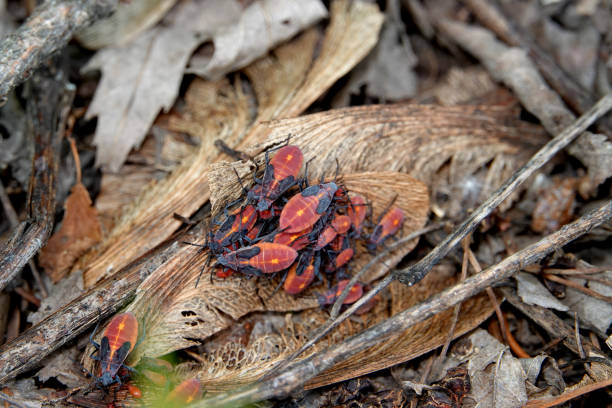All About Boxelder Bugs
Boxelder bugs are a common nuisance pest found in many homes, particularly during the fall and winter months. While they don’t cause significant damage, their presence can be a major annoyance as they invade homes in large numbers seeking warmth. Controlling boxelder bugs is important to maintain a pest-free home environment.
What are Boxelder Bugs?
Boxelder bugs (Boisea trivittata) are insects belonging to the true bug family, Rhopalidae. They are commonly known as boxelder beetles, black and red bugs, or maple bugs. These bugs are named after the boxelder tree, on which they frequently feed and lay their eggs.
Boxelder bugs are known for their distinctive black bodies with reddish or orange markings. They are not harmful to humans but can become a nuisance when they enter homes in large numbers. Their primary food sources include seeds from boxelder trees, but they may also feed on other tree species, including maple and ash.
How to Identify Boxelder Bugs
Appearance:
- Size: Adult boxelder bugs are approximately ½ inch long.
- Color: They have a black body with reddish or orange markings, particularly along the edges of their wings and behind their heads.
- Distinguishing Features: Their elongated bodies and flat wings make them easily recognizable, along with the distinctive red or orange lines on their wings.
Similar Pests: Boxelder bugs can be confused with other bugs like milkweed bugs or red-shouldered bugs. However, their unique black and red coloration, along with their preference for boxelder trees, sets them apart.
Activity and Seasonality
Active Seasons: Boxelder bugs are most active during the spring, summer, and early fall. They become more noticeable in the fall when they start to seek shelter inside homes to overwinter.
Lifecycle:
- Egg Stage: Eggs are laid on the leaves or bark of boxelder trees in the spring.
- Nymph Stage: Nymphs are smaller, bright red, and develop black markings as they mature.
- Adult Stage: Adults appear by mid-summer and remain active until they seek winter shelter.
Where to Find Boxelder Bugs in or Around Your House
Common Habitats:
- Outdoors: Boxelder bugs are commonly found on boxelder, maple, and ash trees, particularly in the bark crevices or on the warm sides of buildings.
- Indoors: During the colder months, they are often found in attics, wall voids, and near windows where they enter homes in search of warmth.
Specific Hiding Spots: Boxelder bugs often hide in cracks and crevices, under siding, or inside walls. They may gather in large numbers in sun-exposed areas on the exterior of homes.
How to Get Rid of Boxelder Bugs
Immediate Action:
- Seal Entry Points: Prevent bugs from entering by sealing cracks, gaps, and openings around windows, doors, and utility pipes.
- Vacuum: Use a vacuum cleaner to remove bugs that have entered the home.
Professional Treatments: Pest Control Consultants offers targeted treatments that can reduce the number of boxelder bugs around your home and prevent them from entering.
DIY Methods:
- Soap and Water Solution: A simple spray made from water and dish soap can be effective in killing boxelder bugs on contact.
- Remove Food Sources: Trim boxelder trees or remove seed-bearing trees near your home to reduce the bug population.
How to Prevent Boxelder Bugs
- Seal Cracks: Regularly inspect and seal any cracks or gaps in your home’s exterior.
- Screen Windows: Ensure that all windows and doors are properly screened to prevent entry.
- Yard Maintenance: Keep the area around your home clean and free of debris where boxelder bugs might hide.
- Tree Management: Consider removing or treating boxelder trees near your home to reduce the bug population.
- Professional Assistance: If boxelder bugs are a recurring problem, professional pest control services can offer more extensive and long-lasting solutions. Pest Control Consultants can provide exterior treatments, sealing services, and ongoing monitoring to ensure that your home remains boxelder bug-free throughout the year. Our experts are trained to identify potential entry points and offer customized prevention strategies tailored to your home’s needs.
Conclusion
Boxelder bugs may not pose a significant threat, but their presence in large numbers can be a major nuisance. Taking steps to control and prevent these pests will help maintain a comfortable and pest-free home environment.
If you’re dealing with a boxelder bug infestation, contact Pest Control Consultants today for a free consultation and effective treatment plan. Let Pest Control Consultants help you keep your home bug-free all year round!
